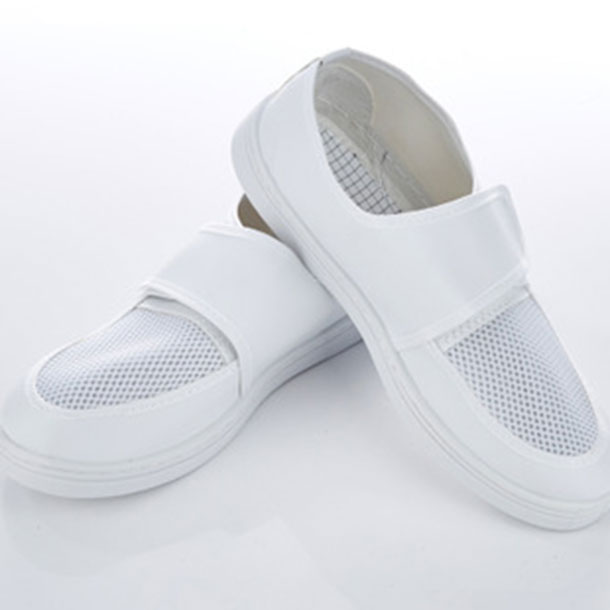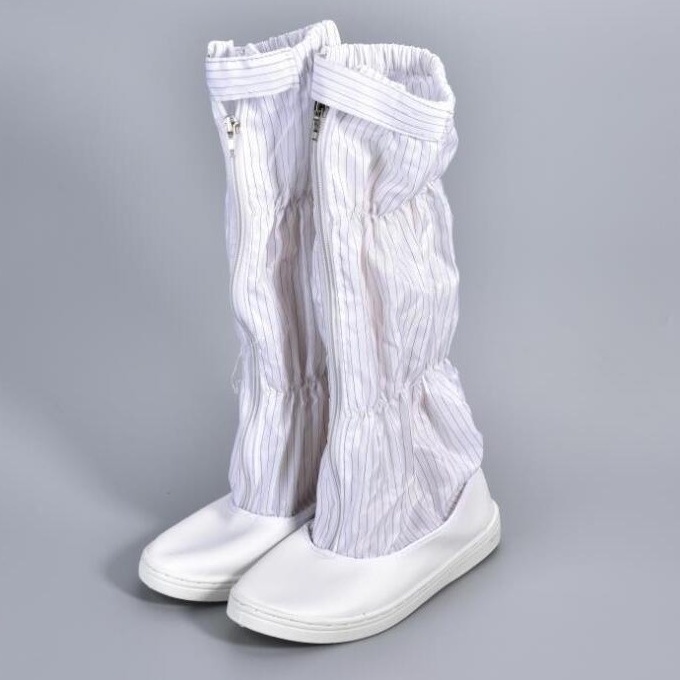DA NANG: 126 Dien Bien Phu, Thanh Khe, Da Nang
HO CHI MINH: 140 Vo Van Kiet, District 1, Ho Chi Minh
DA NANG: 126 Dien Bien Phu, Thanh Khe, Da Nang
HO CHI MINH: 140 Vo Van Kiet, District 1, Ho Chi Minh
ESD Shoes are specially designed footwear that dissipates static electricity, protecting sensitive components and ensuring worker safety in cleanrooms, laboratories, and electronics manufacturing.
In industries such as electronics, semiconductors, cleanrooms, and laboratories, controlling electrostatic discharge (ESD) is critical. Even the smallest static charge can damage delicate components or disrupt production. While ESD wrist straps, mats, and grounding systems are commonly used, one essential element often overlooked is ESD shoes.
These specialized shoes are designed to safely dissipate static charges from the human body to the ground, ensuring both worker safety and product protection. In this article, we will explore the definition, features, benefits, applications, and best practices of ESD shoes to help businesses choose the right footwear for their static-control programs.
ESD shoes, also known as anti-static shoes, are specially manufactured footwear that prevents the buildup of static electricity. They are made using conductive or dissipative materials in the sole and insole, allowing electrical charges to flow safely through the body to the ground.
Unlike regular safety shoes, ESD shoes are part of a complete static-control system in electronics assembly lines, semiconductor facilities, cleanrooms, and laboratories, where even a small electrostatic discharge can cause significant damage.

The most critical feature is the sole, made from carbon, rubber, or polyurethane with conductive additives, which ensures continuous grounding.
Since workers often stand for long hours, ESD shoes are designed for comfort with cushioned insoles, breathable uppers, and lightweight construction.
High-quality ESD shoes provide long-term performance, resisting wear and tear even in demanding industrial environments.
Certified ESD shoes meet international standards such as ANSI/ESD STM9.1, IEC 61340, and EN 61340, ensuring reliable static control.
ESD shoes are available in multiple styles, including:

By dissipating static charges, ESD shoes prevent damage to semiconductors, printed circuit boards (PCBs), and microelectronic devices.
While not designed as electrical safety shoes, ESD footwear reduces static shock to workers, providing a safer work environment.
Consistent grounding reduces the risk of product failures, ensuring smooth workflow and minimizing costly rework.
High-quality ESD shoes are lightweight, breathable, and cushioned, helping workers stay comfortable during long shifts.
ESD shoes are widely used in industries such as:
In many cases, ESD shoes are used together with ESD flooring to ensure proper grounding and reliable charge dissipation.

While both types of footwear protect workers, they serve different purposes:
Some models combine both features, offering toe protection and static dissipation in a single pair of shoes.
When selecting ESD shoes, businesses should consider:
For additional protection, ESD shoes can be paired with ESD wrist straps and ESD chairs to form a comprehensive static-control system.
ESD shoes are a vital component of any electrostatic discharge protection program. By safely grounding static charges, they protect workers, equipment, and products in sensitive environments. Whether in electronics, cleanrooms, or laboratories, investing in the right ESD shoes enhances both safety and productivity.
When combined with other ESD-safe solutions such as ESD flooring, ESD wrist straps, and ESD chairs, businesses can establish a comprehensive defense against static-related risks.
Anti-Static Shoes and Slippers
Anti-Static Shoes and Slippers
Anti-Static Shoes and Slippers
Anti-Static Shoes and Slippers
Anti-Static Shoes and Slippers
Anti-Static Shoes and Slippers
Anti-Static Shoes and Slippers
Anti-Static Shoes and Slippers
Reviews
There are no reviews yet.